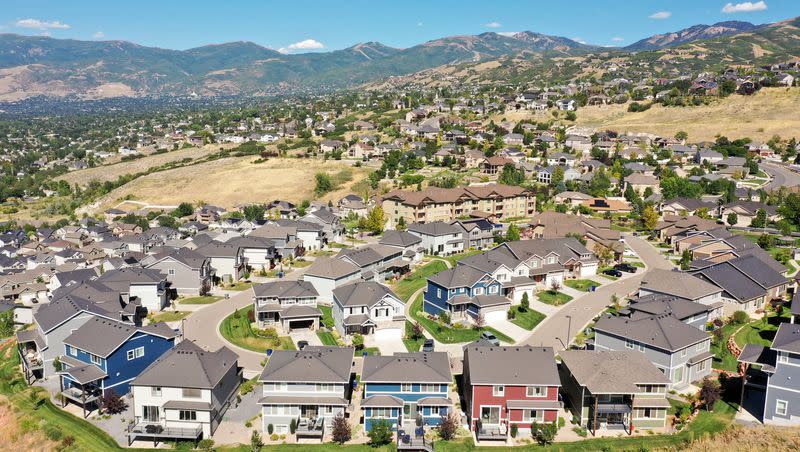Housing market: With near 8% rates, how much does it cost to buy a home?

In today’s housing market, mortgage interest rates are now frequently flirting with 8%, and while real estate prices are softening with the seasons (in some areas more than others), home prices are still high.
So what does this mean for your buying power?
The U.S. national median home listing price declined seasonally to $425,000 in October, down from $430,000 in September, but it remained stable compared to the same time last year, according to Realtor.com’s most recent monthly report.
However, October brought mortgage rates of well over 7% — some days crossing over 8% — increasing the monthly cost of financing 80% of the typical home up by about $166 compared to a year ago. That’s up 7.4% compared to this time last year.
That’s “a new record, on top of what was already the highest amount since Realtor.com began tracking this data in mid-2016,” said Danielle Hale, Realtor.com’s chief economist.
So what does it cost to buy a home? Today’s typical homebuyer must spend over $2,400 a month to own a home. Those added costs increased the required household income to purchase the national median priced home by $6,600 to a nearly $120,000 annual income. That’s almost double the median household income of $64,240, according to Realtor.com.
Related
What’s happening to home prices
Even though high mortgage rates are scattering demand and locking existing homeowners into their current mortgages, they’re not the only reason it costs so much to buy a house.
Home prices aren’t budging — at least not enough to make much of a noticeable difference in affordability.
“Listing prices have been buoyed by scarce inventory,” Hale said.
The overall number of homes for sale in the U.S. dropped by 2% in October compared to the same time period last year.
“That percentage might not seem dramatic at first glance, but this scarcity of listings is downright shocking when compared with pre-COVID-19 levels from 2017 to 2019, which boasted 42.4% more homes for sale,” Realtor.com reported.
Even though more buyers are looking to new construction, with new home sales increasing, homebuilders aren’t putting up enough new homes to fully bridge the low inventory gap, Hale said.
If low inventory is what’s keeping prices high, when will we see an increase in new listings?
“That is the trillion-dollar question in housing right now,” Hale said. She expects it will be “quite a bit longer before buyers can see a large increase in new listings and the number of homes for sale.”
Related
Even though today’s housing market is extremely sluggish in terms of sales compared to the rush ignited in 2020 that ran through early 2022 thanks to pandemic-era low borrowing rates, October surprisingly saw homes selling faster than they were a year ago.
The typical home spent 50 days on the market last month — one day shorter than in October 2022 and 16 days shorter than they did in the average October before the pandemic (from 2017 to 2019), according to Realtor.com’s monthly report.
Usually, the amount of time homes spend on the market increases as sales slow headed into fall and winter. However, “time on market is rising more slowly this year than is typical during the fall season,” Hale said, “as still-limited supply spurs homebuyers to act quickly and newly listed homes make up a greater share of low remaining inventory.”
Related

